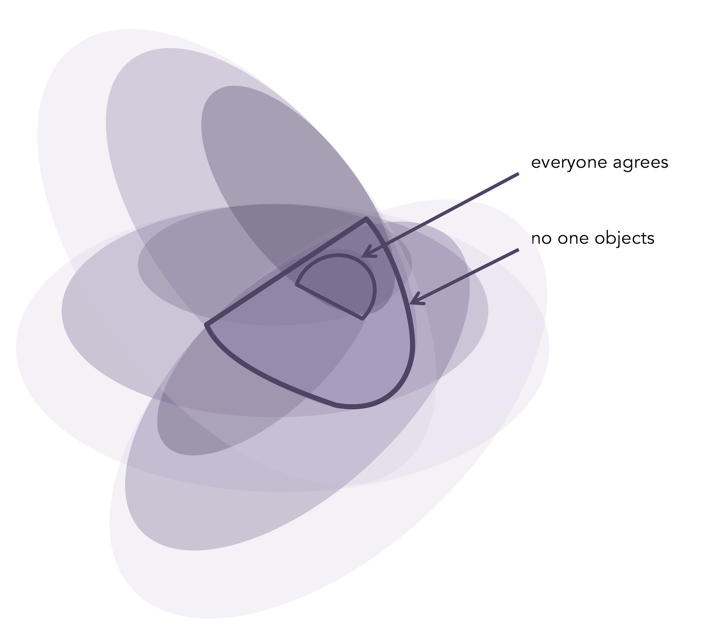Voting is an improvement over autocracy – it distributes more power. Voting presents the image of equality: one person, one vote. Consensus decision making, the usual alternative to voting, also presents an image of equality – the 100% supermajority vote. And yet both of these decision making methods leave many of us deeply dissatisfied. Is there a more effective way to make equality-based decisions?
Majority Vote
Let’s look at ordinary majority vote first. The one that gets more than 50% of the votes, wins. We are used to considering that fair. But whenever we are in the position of the “loser,” we realize that voting divides all people into two groups: the winners and the losers. The losers’ needs, ideas and concerns — even though the losers might form almost half of the group — can be ignored. The lack of information (why did you vote no? what would you rather see?) and the disfranchisement of those who “lose” harms the entire group, including the winners. A group of equals cannot afford to ignore up to half of its people. That’s the tyranny of the majority. We have gotten used to finding majority vote fair and democratic, but it presents a challenge if what we want is for everyone to be winners and on the same team.

To read the rest of this article, please visit: If We’re All Equal, Then Why Can’t We Agree?






